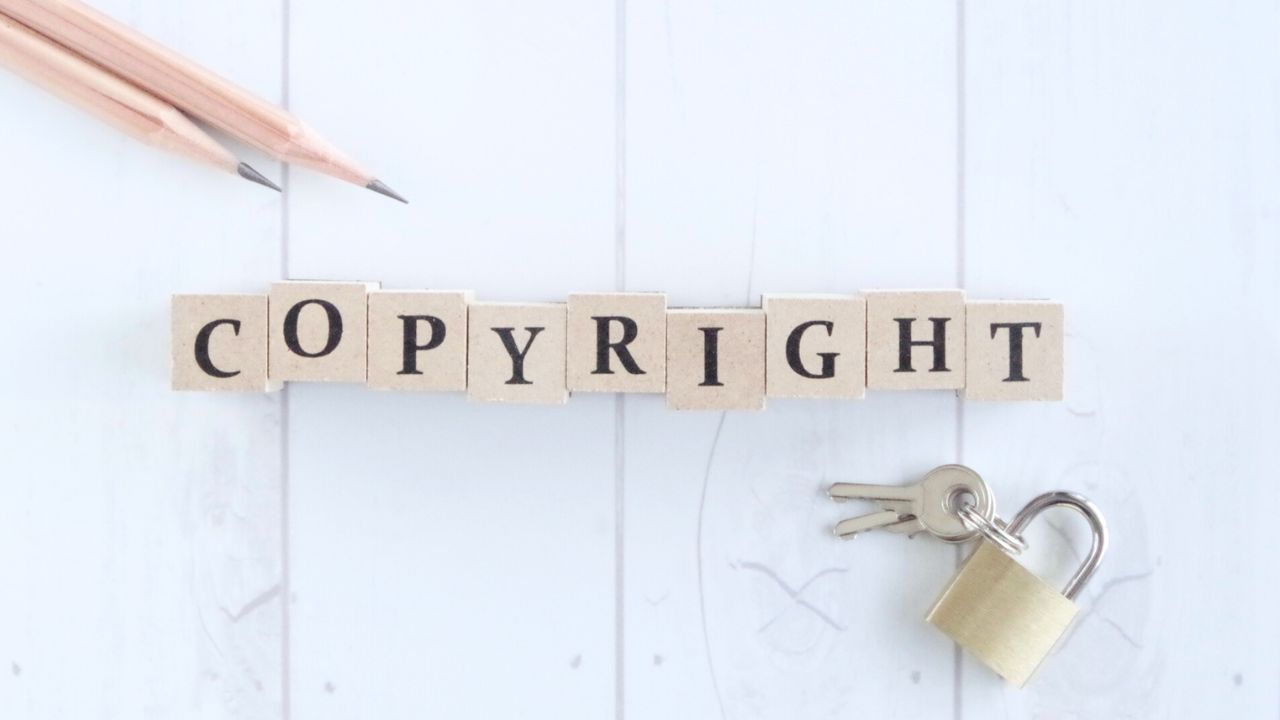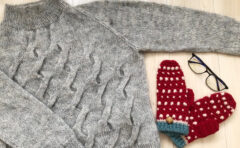I am not a legal expert. This article does not constitute legal advice.
The explanations below are based on general understanding and on the Copyright Act of Japan.
We knitters can enjoy beautiful designs thanks to many people—designers who invest money and years of study into their skills, test knitters, tech editors, editors, and publishers. Their combined efforts are offered to us in the form of paid patterns and books.
Sadly, the reward that should return to these creators sometimes disappears because of actions that should not be done—even if only by a few people.
In this article, I will walk through basic copyright ideas and common examples of what is allowed and not allowed in the knitting community.
What You Can Do—and What You Should Not Do—in Knitting

There are countless designers in the world, not only in knitting.
I once worked as a designer in the advertising industry, so I feel strongly about this:
“Do not take actions that reduce a designer’s income.”
This is essentially about respecting copyright and other intellectual property rights.
Although the law is complicated and not easy to understand, I have seen many situations firsthand. So below, I will list typical NG(Not Good) and OK examples based on common experiences around us.
Bad Practice 1: Selling Knitted Items Made from Pattern Books (Commercial Use Prohibited)
This is not allowed.
Handmade marketplaces and apps have become very popular in recent years, making it easy for anyone to sell their creations. However, I often see people selling items made from patterns found in books that clearly state “no commercial use.”
Most sellers probably do not realize that selling such items is prohibited. But these warnings are written clearly in the book—usually on the final page.
“Commercial use, reproduction, distribution, or submitting works introduced in this book (in whole or in part) to contests is strictly prohibited.”
This is a Terms of Use issue rather than a violation of the Copyright Act itself, but it is still binding. When you buy a pattern or book, you agree to follow these conditions.
Bad Practice 2: Selling or Distributing Someone Else’s Pattern
Also not allowed.
When I attended a workshop by a well-known international designer, the designer mentioned that their pattern had been illegally copied and shared.
Unauthorized reproduction means obtaining a book or pattern through legitimate channels—and then giving a copy to someone else.
It does not matter whether you accept money or not. Sharing is still prohibited.
The book itself states:
“Unauthorized copying, scanning, or digitizing of this book is prohibited, except where permitted under the Copyright Act of Japan.
Requesting a third-party service to scan or digitize this book is a copyright violation, even for personal or household use.”
This falls under Unauthorized Reproduction and may involve civil or criminal penalties under the Copyright Act of Japan.
Even When Copying Is Prohibited, Personal Copies for Self-Use Are Allowed
There are times when you want to copy a chart or page for convenience.
The book says, “Copying, scanning… is prohibited,” which seems absolute. But it also says, “except where permitted under the Copyright Act of Japan.”
This refers to the private-use exception in Japanese copyright law.
After discussing this with the designer and other workshop participants, our shared understanding was:
Making a copy only for yourself, at home, is allowed.
The key phrase in the warning is “third-party services.”
A printing shop or scanning service counts as a third party—someone who does not legally own the book. Giving them your book to copy risks the content leaking or being misused.
Therefore, the warning is meant to prevent situations where pattern data escapes your control.
So, personal copying at home for your own use is generally allowed under the private-use copying exception of the Copyright Act of Japan.
Important:
This is a Japan-specific rule and may differ from the laws or “Fair Use” systems in other countries.
Bad Practice 3: Posting Images of Books on Social Media

Also not allowed, though often overlooked in practice.
Some publishers allow posting a book cover, but the inside pages are almost always prohibited. Uploading book pages without permission infringes the creator’s Right of Public Transmission under the Copyright Act of Japan.
Technically, you need permission from the publisher (or author).
However, in reality, many people post “I bought this book!” with a cover photo—almost certainly without permission.
Publishers may be aware but often tolerate it because it does not harm them directly.
When I worked in publishing, this was indeed the internal understanding: tolerated, but not officially permitted.
Still, because trouble can occur, it’s best to be careful.
So What Is Allowed? Where Is It Written?

To recap, the common “not allowed” actions include:
- Selling items made from patterns in books when prohibited by the Terms of Use
- Selling or distributing someone else’s pattern
- Uploading book images to the internet without permission
However, some designers or publishers explicitly allow certain uses.
For example:
- “Selling finished items is not allowed, but sharing the pattern with friends is okay.”
- “You may post the cover image of this book online.”
These conditions are usually written in the Terms of Use or Notices provided by the designer or publisher.
To Enjoy Your Knitting Life

Designers invest heavily—materials, tools, and especially years of learning—to reach a professional level.
Designing is enjoyable, but not easy.
If they earn too little to live, they may feel:
“Designing is no longer sustainable. I should quit.”
It would be sad to lose a designer whose work you love.
So instead of diving deep into complicated legal texts, we can begin with a simple question:
“Does my action harm the designer?”
We live in a time when anyone can publish images worldwide or sell handmade items with just a smartphone.
That is exactly why we need to be more mindful of what is allowed and what is not.
As knitters and crocheters, let’s stay aware and consider each action carefully.



コメント